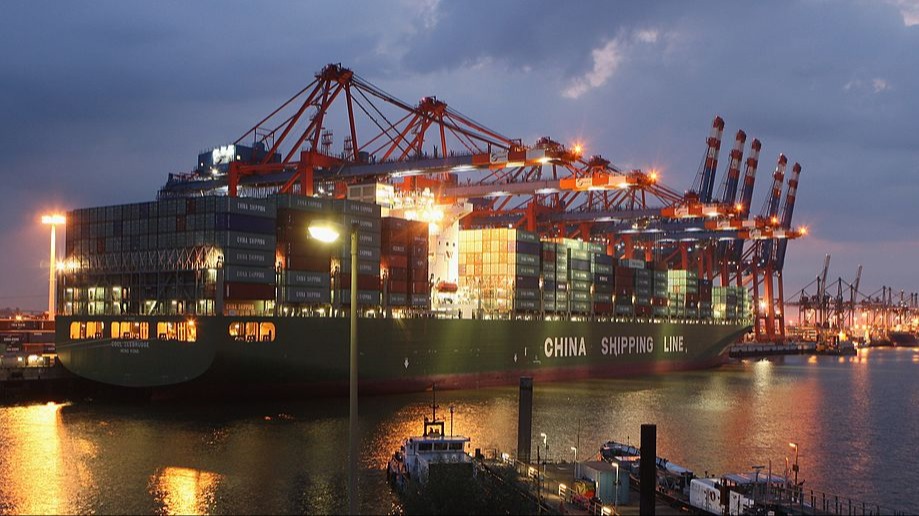Countries attacking the EU’s carbon border price may be exaggerating their claims
Adrien Assous is executive director of Sandbag
For years the EU Emissions Trading System has failed to incentivise European industry to decarbonise. This is because regulators have struggled to simultaneously increase the price of carbon for European companies while protecting them against foreign competitors who do not pay carbon prices on their exports to the EU.
Until now, the EU’s solution has been the free allocation of emission permits. With these permits, European companies have in effect been able to avoid paying a price on carbon to remain competitive with their foreign counterparts, who often lack a domestic carbon market and do not pay carbon taxes before exporting their goods into Europe.
This has distorted the carbon market created by the ETS and prevented it from meaningfully driving decarbonisation.
Delaying Europe’s clean transition will only set European industry further behind the world’s other leading economies — decarbonisation is ultimately in our economic interest too.
This is why the effectiveness of the ETS hinges on the urgent phasing out of free allocation. However, removing free allocation on its own would leave foreign exporters capable of further undercutting European companies on price. That would make the ETS less effective at lowering emissions, while also risking the relocation of EU jobs to higher-emission, lower-cost countries.
For that reason, a second policy tool, the Carbon Border Adjustment Mechanism, was created.
Instead of exempting European companies from paying for carbon, CBAM puts a levy on imports into Europe so they incur the same carbon price as goods made in Europe. It is expected to gradually replace free allocation from 2026 onwards, levelling the playing field for manufacturers in Europe and abroad.
Crucially, CBAM will account for whether any goods’ country of origin already have a price on carbon in place, subtracting these costs from any import tax paid upon arrival in the EU.
CBAM is not a protectionist tariff; it is an economic equaliser ensuring all companies in the European market pay a fair price for carbon.
Nevertheless, opponents — even countries with less carbon-intensive export bases than Europe’s — have made questionable claims designed to force the EU to water down CBAM’s 2026 implementation.
We often hear dramatic allegations about CBAM’s cost and impact on Europe’s trading partners.
The US has claimed that CBAM will impact $4.7bn worth of American exports, India has framed CBAM as a protectionist tariff and threatened retaliation, while South Africa has argued that CBAM will be unfair to developing countries.
Overstated claims
Our analysis at Sandbag, a Brussels-based think-tank, finds that claims of excessive costs for Europe’s trading partners are overstated.
Our CBAM simulator reveals that the net costs of CBAM for exporting countries will be significantly lower — by an estimated 56 per cent — than the full fees. This is because companies can factor much of the costs imposed by CBAM into the price at which they will sell their goods. This reality is missing from previous estimates underpinning foreign countries’ criticisms.
Consider the US, a relatively low carbon producer by international standards. Factoring in costs passed on to consumers, Sandbag estimates that the US’s net CBAM costs are just €160mn, only 0.07 per cent of total transatlantic trade in goods. For the world’s largest economy, this figure is negligible.
Furthermore, for developing economies, CBAM can be an opportunity to generate revenue.
Our analysis shows that if these countries implement even modest domestic carbon pricing, they can drastically reduce their CBAM fees and keep tax revenue at home to invest in clean industrial infrastructure.
South Africa could reduce its net costs to just 0.29 per cent of the value of its annual trade in goods with the EU by implementing a carbon price at just one-quarter of the EU’s price. For India, a carbon price at the same level would reduce its net costs to 1.53 per cent.
And that is before even considering reduced CBAM fees that would apply if exporters lowered their own emission intensity.
Play by the same rules
CBAM offers two paths to Europe’s trading partners: pay a fair price on carbon for your exports to Europe, or keep the revenue using your own domestic carbon price.
It protects Europe’s industries as they reorient towards green growth, preventing other countries’ companies from undercutting them on price until they do the same.
The EU has also announced plans to help those countries poised to be most impacted by CBAM to make green investments.
As European industry works within its own carbon pricing system, the EU is asking for foreign companies to play by the same rules as its own, with a relatively small price tag.
When the EU and its partners gather in Brazil at COP30 in November, they should seize the opportunity to build a sustainable future together, using carbon markets to unlock paths towards green growth.
